The word ‘Stein’ literally means ‘stone’ in German. A real authentic German beer stein made of ceramic, crystal, glass, metal, or wood is highly valuable and ranges in size from 1 ounce (29.5 ml) to more than 8 gallons (30 l).
However, it is not easy to recognize the real stuff among numerous cheap copies, and it can be a bit complicated for a layman to make a difference. Unfortunately, many tourists buy the beer stein as a souvenir and find out that they have been cheated once they return home. So, let’s see how to tell if a beer stein is valuable.
What is German Beer Stein
The etymology of the German word ‘stein’ is not entirely clear, but it probably originated from one of two terms:
Stein Krug – It means ‘stone mug’
Steingut – It means ‘stone goods’
The most common pieces were made of:
- Silver
- Crystal
- Glass
- Porcelain
- Ceramics
- Earthenware
- Creamware
- Pewter
- Wood
In most cases, old mugs are hand-painted and beautifully decorated. You can find steins that range from 1 ounce (29.5 ml) to 8.4 gallons (32 l) in volume. However, the typical volume of the most popular pieces is 16.9 ounces (0.5 l).
German Beer Stein History
The oldest saved German earthenware beer steins were dated from the 14th century when the bubonic plague killed millions of people in Europe. The first pieces were made after passing the law in a few German principalities related to sanitary conditions. It required the covers over food and beverage containers to prevent a vicious disease.
Until that time, the upper class drank from beakers or tankards made of silver, glass, and pewter, while common folk used mugs made of wood and earthenware. However, the Black Death changed many established customs.
Once stoneware was created, old manufacturers started making stoneware drinking steins with pewter lids. In the 19th century, the stein officially became a product made in Europe. The most common were stoneware pieces with a permanently attached lid.
Nowadays, you can also find pewter vessels produced in England, but their manufacturers commonly used silver, glass, and porcelain. The best of all was the diversity of stein-decorating styles that reflected the time’s best artisans’ imagination and skill.
The most prominent pottery centers were Siegburg, Cologne, Frechen, and Kreussen. Stein production upswing tremendously in the 1850s, but most stein makers limited it during World War I because of the raw material shortage.
Even though stein making started again after 1918, most people stopped using them daily. Consequently, the production never reached the previous level. Thanks to modern technology and contemporary materials, many companies produce beautiful steins these days, mostly as souvenirs.
Age of the German Beer Stein
Beer steins are a German favored gift for centuries, and you can find the date that it was given on the lid. However, it can be tricky to rely on this information when it is necessary to determine the item’s age.
Unfortunately, it is not rare that someone attaches an old lid to a new stein. These dates have sense only when the other mug traits are also consistent.
German beer stein |
|
|
Type |
Period |
|
Early (antique) |
|
|
Old |
|
|
Jugendstil |
|
|
Third Reich |
|
|
Contemporary |
|
You should also pay attention to a four-digit number on the stein side or base that begins with 17, 18, or 19. It is not a date but a form or mold number.
German Beer Stein Types
You can choose among various German beer steins that are differently painted. The most beautiful include:
Carved steins
This popular, hand-carved, and bold colored collectible pieces contain patriotic scenes or folk tales. They are almost always precious.
Ivory steins
It is possible to find pieces with highly realistic and detailed human and animal carvings. They are highly appreciated and valued, but you should have ivory trade restrictions and legalities on your mind before shopping.
Regimental steins
These authentic German steins with soldiers’ names and ranks were made to commemorate the successful completion of active duty. The old pieces include the owner’s last name and status, while modern models contain their first and last name and soldier rank.
Glass-blown
Hand blown steins are probably the earliest pieces produced. You can find green, red, cobalt, and brown varieties on the market.
Character steins
The production of these personalized steins began in the 1850s. They were made in the human, animal, or item shape.
Mettlach steins
The Villeroy and Boch Co. of Mettlach produced undoubtedly the most prestigious stoneware hand-painted pieces you can find nowadays. Most of them were made between 1880 and 1910.
The most popular stoneware beer steins are both stylish and durable, and you can find numerous shape styles, including:
- Traditional stein
- Bavarian stein
- Barrel stein
- Potbelly stein
- Tavern stein
- Lodge stein
- Smokestack
- Chalice
- Pilsner
- Hofbrau
- Hourglass
- Pint Glass
The Real vs. Fake German Beer Stein
German beer stein
It is hand-painted – Always carefully examine the stein for imperfections and raised design. The older steins interior is never perfect, and you can spot a hand-painted, slightly raised design on the bottom. Also, pictures are modest, often with angels, and you can’t find any nudity, for example.
A mass-produced piece is almost always machine-made and painted parts look flawless. However, the colors are blurred and of lower intensity.
It tells a story – Each old illustration tells some story. The most valuable includes:
- Biblical figures
- Historical event
- Famous battle
Material – Original German beer steins are always heavy and made of expensive materials, such as ivory, silver, and glass. The modern, imported models you can find online are light and made of low-quality clay.
Bump on the handle
Until the 1920s, steins didn’t have bumps on the handle. Pieces with grooves or bumps for fingers are modern and probably not worth much.
Maker mark
The best stein manufactures have easily-recognizable marks, and you can find their list in many available databases. In fact, all steins intended for export and produced after the ‘Merchandise Marks Act’ valid in Germany since 1887 were marked. There were two options, ‘Made in Germany’ or only ‘Germany.’
Keep in mind that the mark absence doesn’t mean the stein you look at is false. Most pieces created for the domestic market didn’t need to be marked. You can also find models marked with ‘Western Germany,’ meaning that they are produced from 1949 to 1990.
Some manufacturers tend to be unique so that you can find different mark types on beer steins, such as:
- Data pressed into the wet clay
- Sticker-like marks laid before baking
- Limited, collector pieces with hand-written marks
The most common mark is ‘Gemacht in Deutschland’ (Made in Germany) when it comes to old glass steins.
Stein lids
According to the lid shape and appearance, you can quickly determine the stein age, quality, and price. The original metal lids are cast from one piece, while copies are poorly created from three or four separate casts.
The next thing to check is the edges and the lid inside. Cheap varieties have a very rough lid look without a stamp. Be careful because you can sometimes face a Chinese stein with an original German lid with a pressed stamp.
Keep in mind that the lid’s soft metal will darken on the air over time. However, its inside is always lighter than the outside. Plus, almost all German steins have a thumb lift, unlike cheap replica.
The most common lid shapes include:
- Ornamental lids – Such pieces are always created of pewter. The handwork ones are trendy nowadays for limited edition steins.
- Inlay lids – They are well-known for an ornament stoneware, porcelain, glass, or wood figurine inlaid in the center and surrounded by a pewter flange and pewter rim.
- Conical or steeple lids – They are the most common and cheapest models you can buy.
- Flat lids – These models made of pewter are popular since the manufactures can effortlessly engrave them.
Pewter fittings
Since this stein part has changed over time, you can use it to determine the stein dating and pricing.
German Stein Value
You can find an antique German beer stein at a price range from $50 to $5,000. The precise information about the particular piece can make a difference of thousands of dollars.
For example, a 17th-century American tankard, which belonged to one family for generations, was sold for $140,000. On the other hand, a Marzi & Remy stein from the 1850s without proof of origin reached only $150.
Another thing is stein’s condition. The most valuable pieces are:
- Intact and without too many dents and cracks, especially damage to the front
- Without evident repair work and unattractive discolorations
- With clear original decorations
- With working hinge on lid
Summary
Steins are German mugs created for drinking beer. Over the years, manufacturers have used silver, pewter, crystal, glass, porcelain, ceramics, creamware, ivory, and wood to make gorgeous pieces.
Be careful when deciding to buy one and always check its age, quality, and value since there are too many reproductions available on the market nowadays.

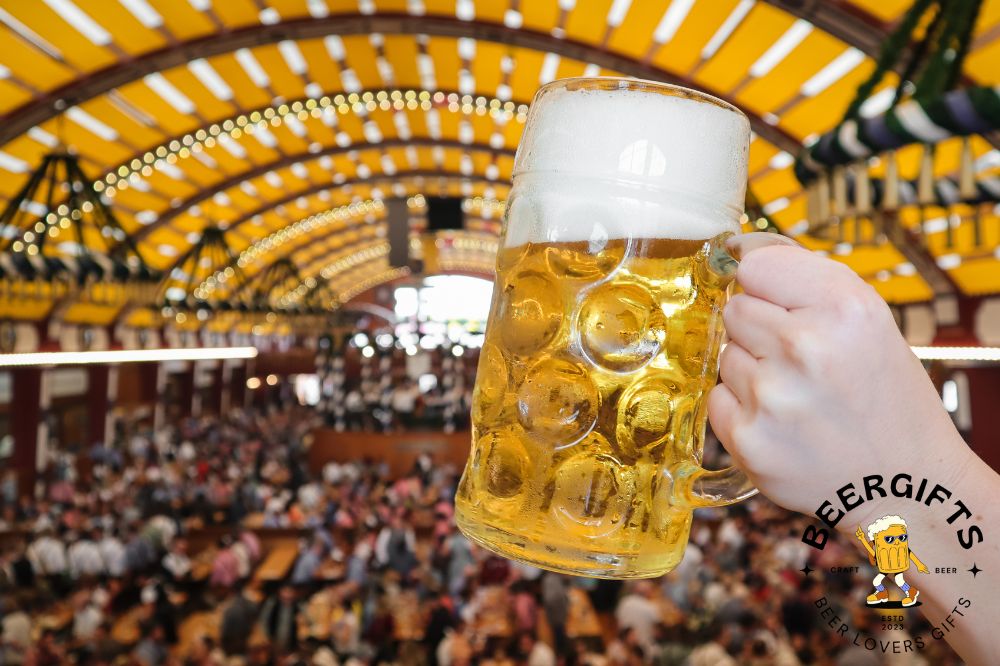

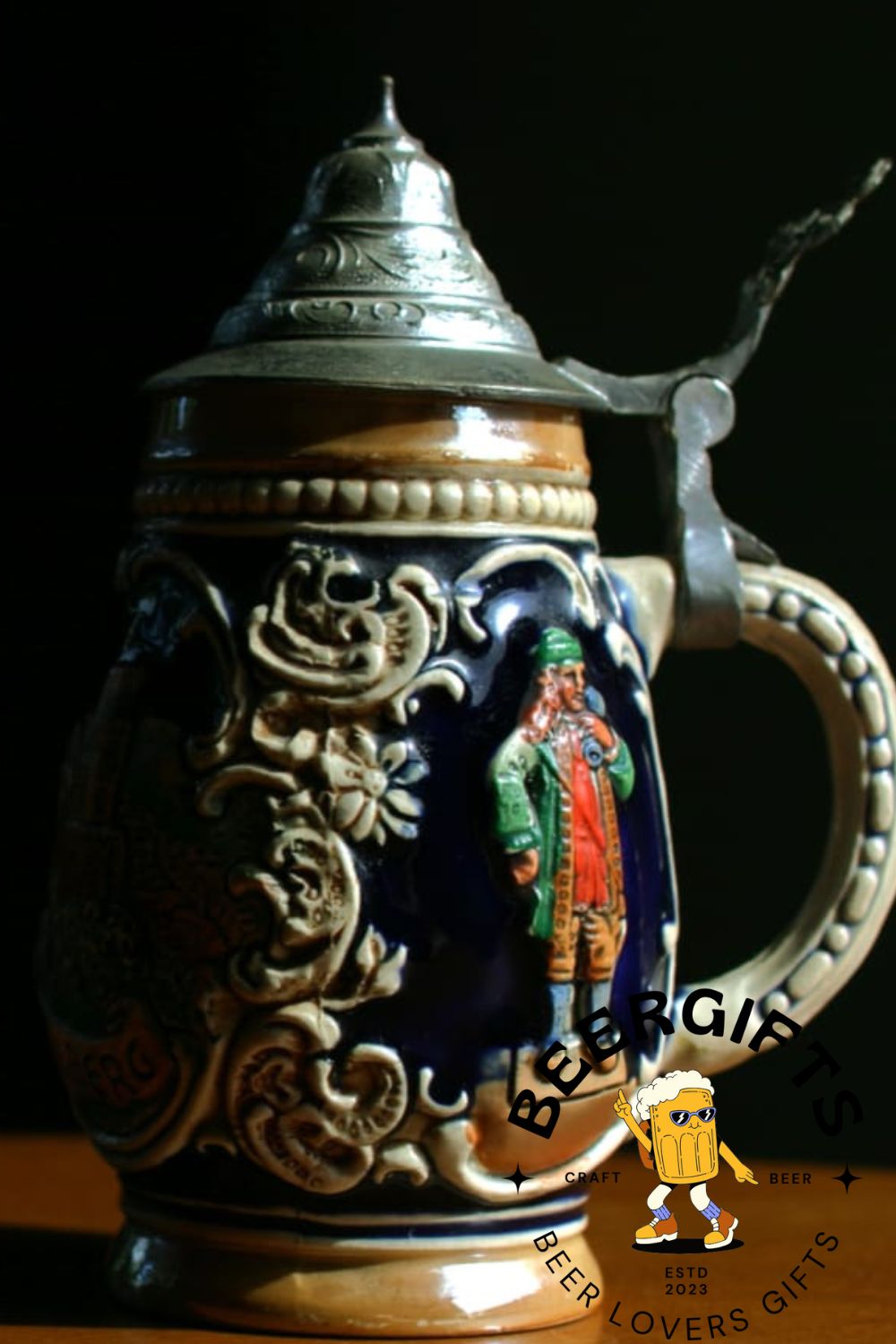
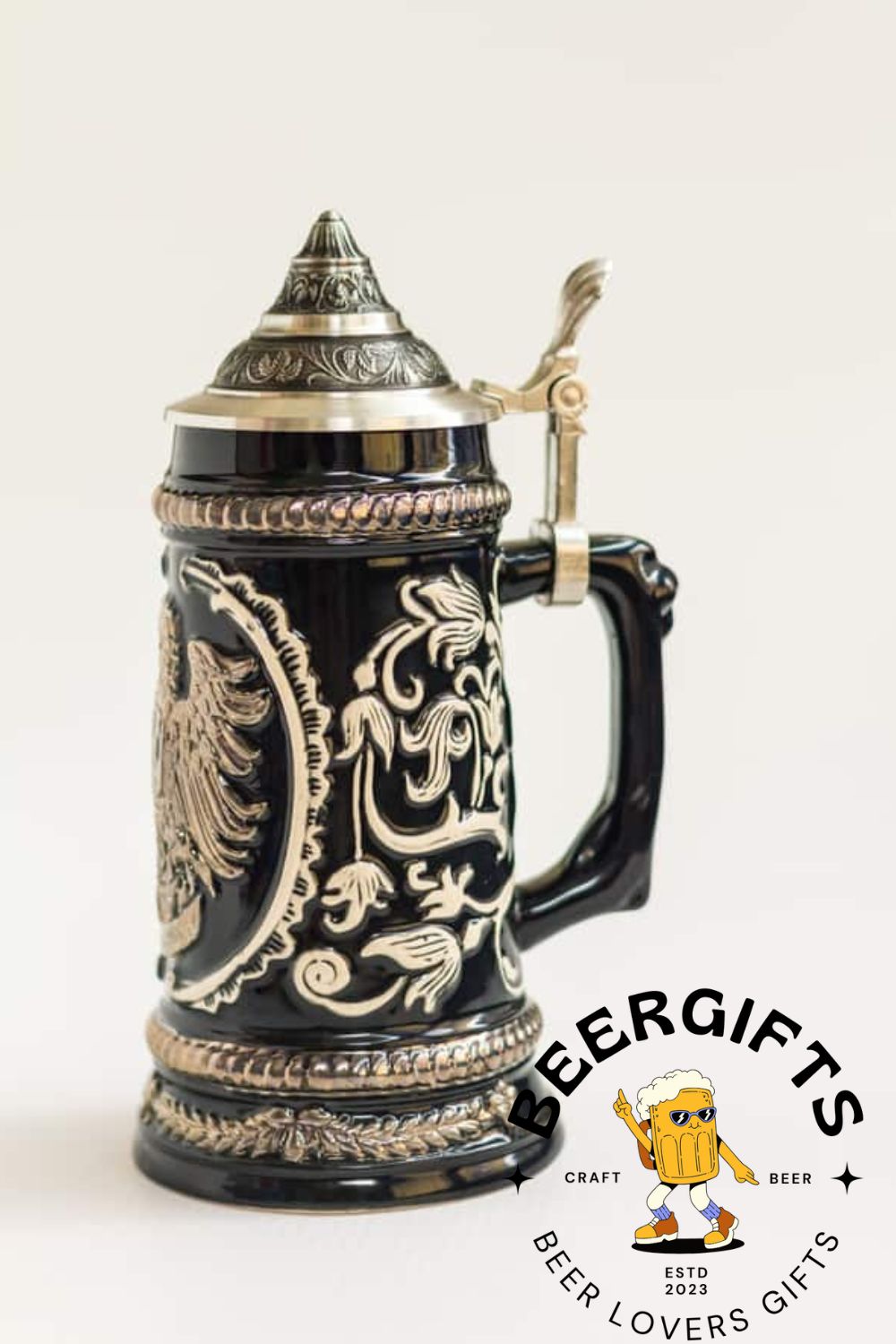
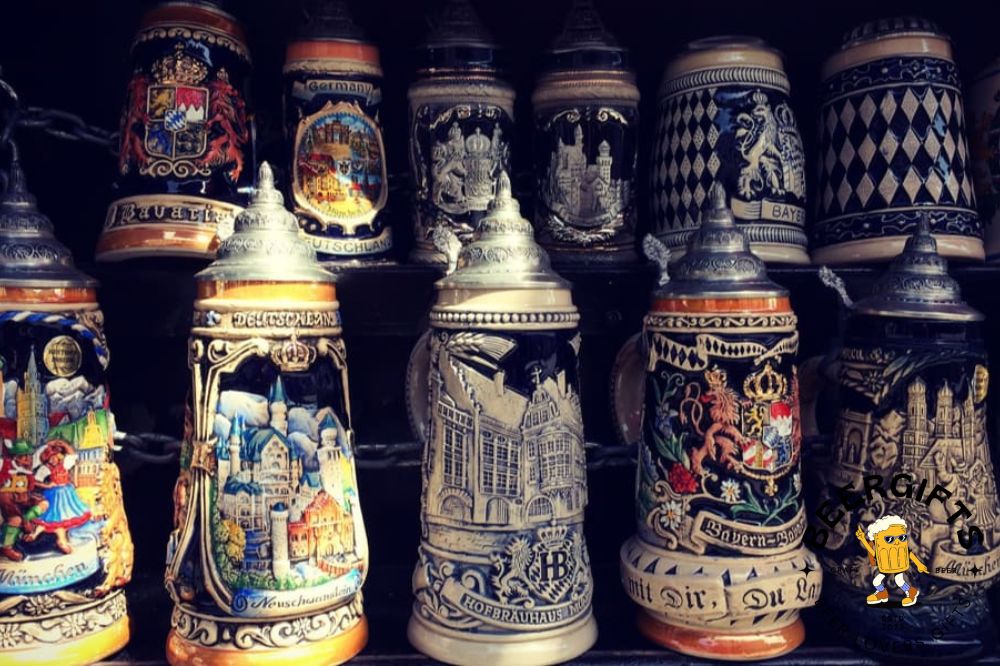
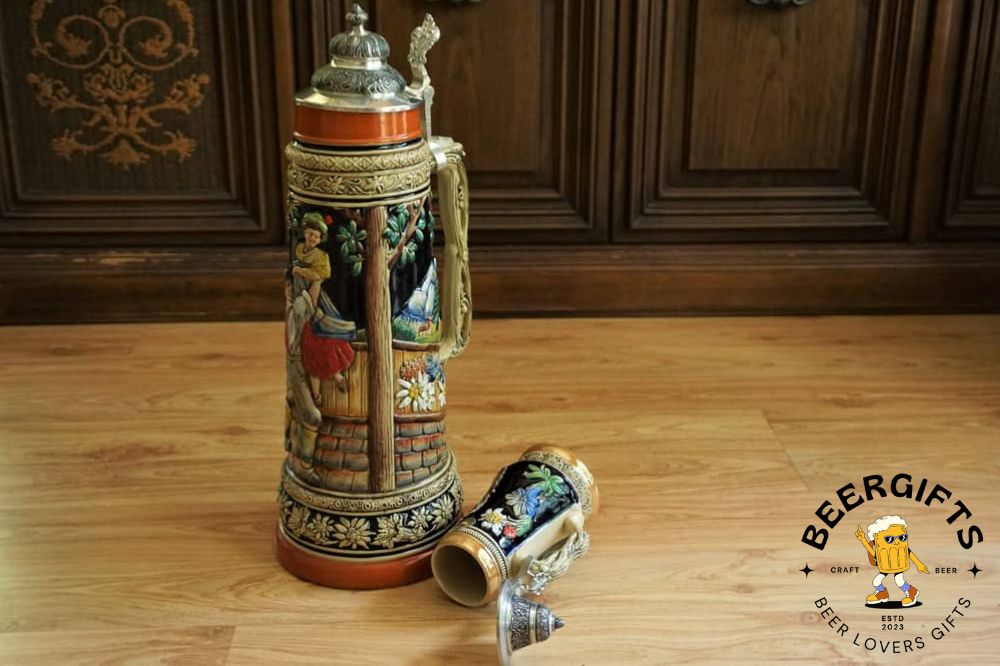

Hello. I have a stein collection inherited from my grandmother and i am seeling them. I don’t know much about them but have been doing some research. I heard that a stein that looks like it has been dipped to look old and the lid is dark on the outside and shinny on the inside could be worth a significant amound. I have a 9 inch vintage west german stein that fits that discriptuion. It has a ingraved picture of i think a castle with 1894 below it and also says original model and has a number 2 beside that and a teiangle beside that. I would like to send pictures of that and my other steins to someone that could give me some ball park value. I have 20 steins with 2 mugs, 1 candle stein by johann gunter with seit 1924 on a sticker on th bottom, never been lite up and also has matches never used in a little box holder. Every stein is in mint condition, no chips or anything wrong except one is a avon stein i had to glue the thumb part on the lid an another stein i had to do the same thing. All steins were collected from 1940,50,60,and the avon one was from 1976. I would love to have someone look at the pictures and let me know what i have. My hobbies are hunting, fishing, and building small scale 1800’s sailing war ships. I don’t collect steins. Thank you.
Call me
JoJo 315 427 8822
what will an appraisal cost?
I have 2 from Germany during world war 2. Hand painted with pewter lid. Markings on the bottom just don’t know what they’re worth. They’re absolutely beautiful.
Would like to identify a stein brought to the US by my great grandfather. Original a large stein with six matching smaller ones. Only 1 small remains, and neither have lids any more.
Best way to have identified?
I have several from my grandparents that are 200 yrs old, Was wondering the value and place to sell some?
Have a stein from Mynich Olympics oerect condition has a mark on the base with an M on top and an R below it. Also the number 3019 with the number 10 under it. Is it only a souvenir or did my grandfather buy the real mc coy.
i have an Albert Jacob Thewalt stein cerca 1906 witha frog in the bottom, is this unusual?
I have a Cocham castle stein from Germany that I’d like to identify please
Hi, I have a stein which I have had since 1981. I was given it when I was in Germany in the armed forces.
It depicts two women and a man, one of the women looks like she has stabbed something into the head of the man.
Near the bottom of the handle is an acorn, can you please tell me if it’s worth anything before I give it to my local charity shop.
I have some steins could you help me identify the value? Thank you
I have a stein from Wildeshausen, Germany, with “Stover” on the bottom. It has a pewter stye lid and a drawing of church, black sketch against a white background,among other things. My mother brought it back from Wildeshausen, where she grew up, from a visit in the ’70’s.
I have inherited four stein ware pieces all look authentic and are made by King.
Is there anyone that could help me value them.
Thank you in advance 🙂
Hi there…I have a blue stein with a scene and the words:
Ein Kundiger fecter der rauftnight , Ein trinker fin rechter der sauft night
with a pewter lid ,
It has a “fancy scripted” 2L. with a line underneath…located at the top outside under the lid part
and number 882 on the bottom
Would appreciate any help on value?
I have a couple steins could you help if real and if worth anything
Hi
I have a stein with two Mark on the inside of the lid.
ORIGINAL King pressed into the bottom with a small number 7 and a larger 500.
There is no bump on the handle.
There is also a name on the front which looks like pilzem or litzern.
The picture is of a couple, man on the left playing what could be described as an ocordian on his lap and woman both hands on his shoulder.
I would really appreciate any info on this much loved stein.
Regards
Andy Caine